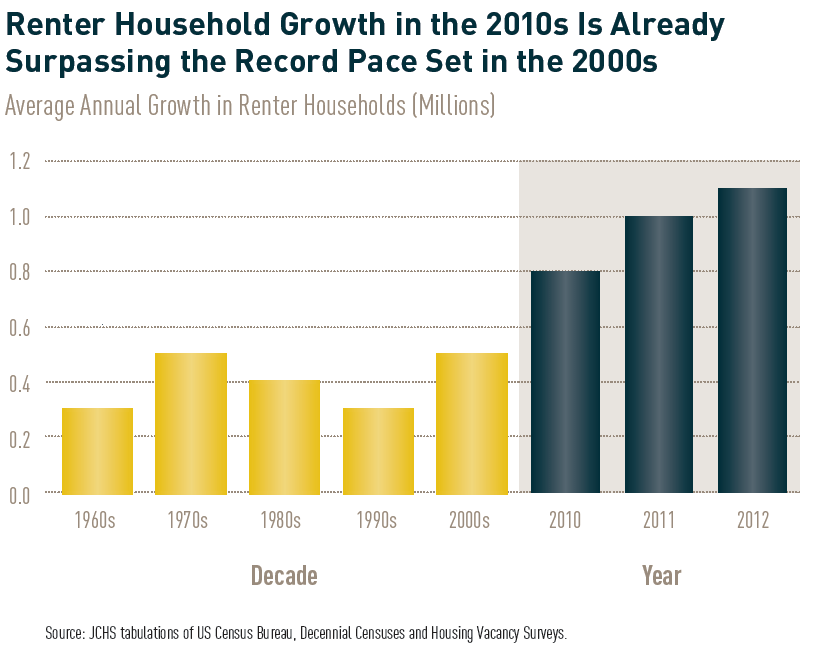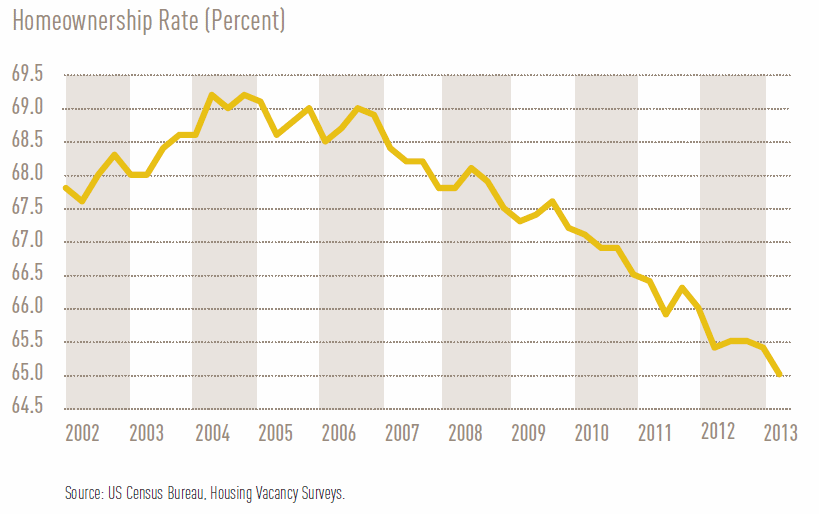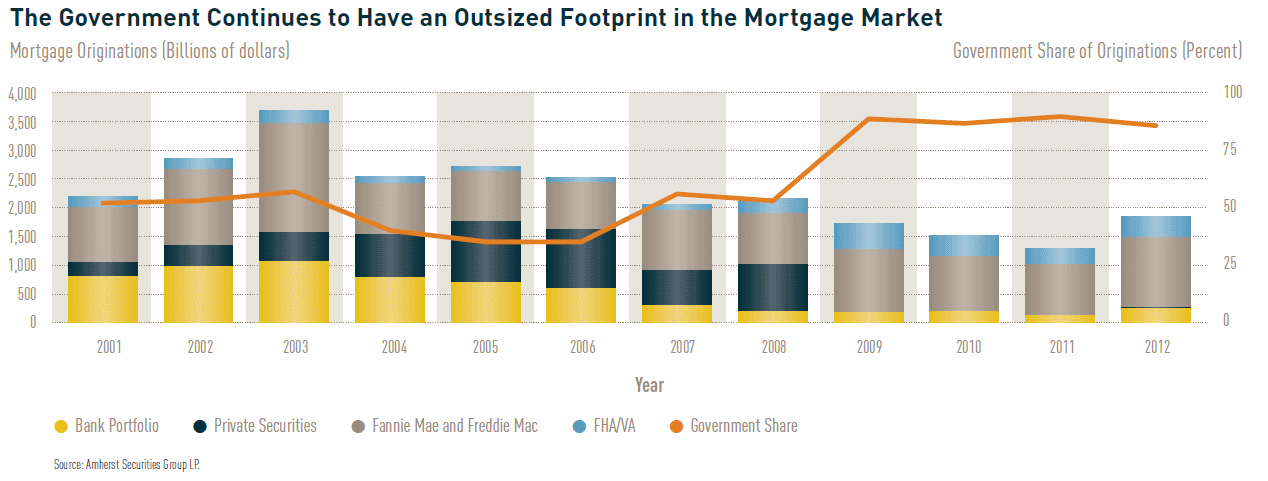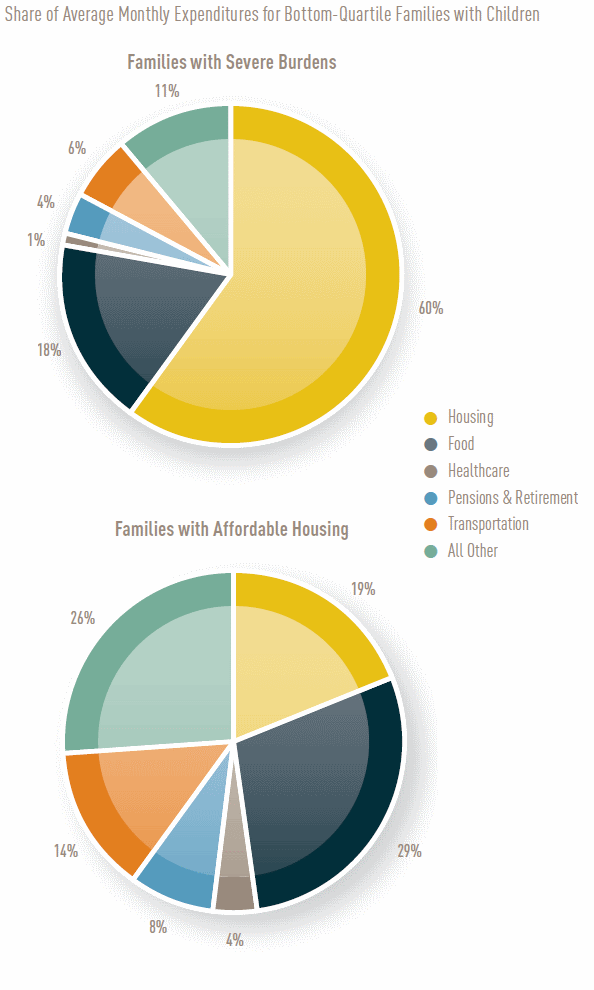The Joint Center for Housing Studies released its annual State of the Nation's Housing report last week. Key points indicate a housing recovery that it coming on strong for some but not all Americans. The Report uses oft-cited data to demonstrate that the recovery is well underway:
Housing Prices and Sales
- 2012 was the second consecutive year home prices increased by double digits. In March 2013 the annual increase was 11.6 percent.
- The gains are broad based. Prices are up in all but two states and in 94 of 100 metros tracked by CoreLogic.
- Existing home sales increased 9.4 percent to 4.66 million between 2011 and 2012, the largest precentage increase since 2003-2004. New home sales posted their first year-over-year increase in seven years in 2012.
- Between the fourth quarters of 2011 and 2012 the number of underwater homeonwers fell by 1.7 million to 10.4 million.
Inventories
- There were only 1.8 million existing homes on the market at the beginning of 2013, a half million fewer than the previous year and the lowest level since 2001.
- There were only around 150,000 new homes, a historic low, available throughout 2012. As the spring market began in 2013 new homes for sale represented only a 4.0 month supply, the shallowest inventory since October 2004.
Household Growth
- Growth rebounded in 2012 growing to 980,000 households from around 600,000 average over the previous five years.
- Foreign-born households remain pre-recession levels but still registered the largest increase since 2008.
Rental Market
- April 2013 was the 34th consecutive month CPI measured rents grew and the 15th month annual increases exceeded 2.5 percent.
- As more households opt to rent the rental vacancy rate fell for the third straight year to 8.7 percent, the lowest level since 2001.
Interest Rates
- Record low interest rates made a payment on a typical home the lowest since recordkeeping began in 1972 and about half the peak of $1,266 in 2006.
- Only four major metropolitan areas had median payment to median income ratios outside the range considered affordable - 25 percent - in 2012.
- Refinancing reached its highest level since 2006 and 1.1 million homeowners were able to refinance underwater or near-underwater properties, substantially lowering their monthly payments.
Residential Construction
- Residential construction picked up sharply, contributing to the broader economy for the first time since 2005. Residential fixed investment, including home improvements, contributed a quarter point in economic growth in 2012 and represented12 percent of the economy's total increase.
- Single family construction starts rose 24.3 percent in 2012 to 535 units, but was still only half the annual level of the 1980s and 1990s.
- Multi-family starts were up 37.7 percent in 2012 to 245,300 units, the second straight year of double-digit gains.
- Home improvement spending accounted for 45 percent of residential investment expenditures in 2012 compared to an average of 25 percent in the decades preceding the housing crash.
The report looks at the role that investors are playing in the recovery; they bought one in five homes sold in 2012. In contrast, first-time homebuyers are not driving sales. Their estimated share of sales only moved from 37 to 39 percent even as the economy improved between 2011 and 2012.
The presence of investors in the market has resulted in a sharp increase in the numbers of single-family homes that are now rental properties Fourteen million houses were converted from ownership to rental (net) between 2009 and 2011 and the percentage of renters living in single family houses rose from 30.8 percent in 2005 to 34.1 percent in 2011. The number of renters increased by more than 1.1 million between 2011 and 2012. This represents all net household growth during that time.

The composition of those renters has also changed. One of the groups traditionally high in homeownership, households aged 55-64, increasingly became renters, with renting households growing by 80 percent between 2002 and 2012 while all other renter age groups grew by 50 percent. Other groups with traditionally high homeownership rates also became renters including married couples with children, high-income households, and white households.
Another shift occurred in 2012 as institutional investors moved into areas such as Atlanta, Law Vegas, and Phoenix where strong pre-recession growth was strong where housing took a real hit as foreclosures increased. Investors accounted for about 14 to 18 percent of sales in these cities at the beginning of 2012 but their share had accelerated to around one-quarter by the end of the year.
The Joint Center sees two demographic trends shifting housing demand. Older households are projected to increase by 9.8 million over the coming decade as baby boomers move into the 65-and-over age group and the new minority households will account for seven of ten formed. Minority households are expected to increase by 8.7 million between 2013 and 2023.
Amidst the good news about the recovery, however, the report points to a number of areas of concern. First, homeownership rates are still declining. Eric S. Belsky, Managing Director of the Joint Center said, "Even as historically low interest rates have helped make the monthly cost of owning a home more favorable than any time in the past 40 years, the national homeownership rate fell for the eighth straight year in 2012," says Eric S. Belsky, Managing Director of the Joint Center for Housing Studies. "The drop was especially pronounced for 25-54 year olds, whose homeownership rates were at their lowest point since record keeping began in 1976."

The homeownership rate for African American households it at its lowest level since 1995 (43.9 percent), and both the Hispanic and White rates are at their lowest level in a decade, 46.0 percent and 73.5 percent respectively.
While foreclosures and delinquencies are dropping they remain high by historical standards and 1.4 million homes remain in foreclosure. Delinquencies are still at 7.3 percent.
The credit constraints brought about by the housing crash continue to hamper homebuyers, the Joint Center says. Average credit scores for conventional mortgages (720-730 range) caused credit to be denied for both purchases and refinancing. African Americans were denied credit in 2011 at a rate of 36.9 percent, compared to 14.0 percent for white borrowers and around 24.4 percent for Hispanics.
"Tight credit is limiting the ability of would-be homebuyers to take advantage of today's affordable conditions and likely discouraging many from even trying," says Chris Herbert, Director of Research at the Joint Center for Housing Studies. "At issue is whether, and at what cost, mortgage financing will be available to borrowers across a broad spectrum of incomes, wealth, and credit histories moving forward."
Government involvement in lending for both single-family and multi-family housing continues high with government-backed loans accounting for roughly 90 percent of all originations in 2012. The GSEs and FHA hold 44.5 percent of all multi-family mortgage debt.
(click chart below to enlarge)

The Joint Center sees a stronger recovery hindered by weak income growth, eroding wealth, and high debt levels. Median household income fell 1.5 percent from 2010 to 2011 to 8.1 percent below the 2007 peak and 6.7 percent below the 2001 level. The decline in income as true for all age groups except those over age 65 and was the sharpest among younger households.
Household wealth is very uneven by ethnicity. The median worth of a white homeowner in 2010 was $214,000, more than 2.5 times that of a black homeowner and 2.8 times that of a Hispanic homeowner. Home values, a prime factor in building household wealth, declined most dramatically in the wake of the recession for non-white minorities. Hispanic homeowners lost an average of $100,000 (35 percent) of real home value between 2007 and 2010 and black homeowners saw their home values plunge by 31 percent or about $69,000. By contrast, average values for while homeowners fell just 15 percent in the same period.
Minorities are a growing part of the potential first-time homebuyer pool but have fewer resources to draw on for a down payment. Among renters in the 25 to 34 age group whites had median net wealth of $6,500 while Hispanics had $4,400 and blacks only $1,400.
Many households are also burdened by student debt which increased by 39 percent between the beginning of 2005 and the end of 2012. Average debt was $13,300 at the beginning of the period and $21,400 at the end. Student loans are not just a problem for younger age groups. Of the $600 billion increase in student loans outstanding over the six years ended in 2012, fully 38 percent went to households over age 40.
Housing costs are burdening large numbers of households. In 2011 42.3 million or 37 percent of households paid more than 30 percent of pre-tax income on housing costs and 20.6 million of those paid more than 50 percent, i.e were severely cost burdened. These households increased by 6.7 million between 2001 and 2011 and by 2.6 million since the start of the recession. Severely burdened renters increased in numbers by 2.5 million post-recession. These households spend only about two-thirds as much on food, half as much on clothing, and one fifth as much on health care as families living in housing they can afford.

At the same time the supply of housing units affordable to extremely low income renters shrunk by 135,000 units between 2007 and 2011 and the government assistance available to help with housing costs is steadily diminishing. Funding for must federal programs has been cut and the supply of subsidized rental housing is decreasing by about 10,000 units per year. Thirty-five percent of residents in federally assisted housing have a disability, 31 percent are over the age of 62 and 38 percent are single-parent families.
"With rising home prices helping to revive household balance sheets and expanding residential construction adding to job growth, the housing sector is finally providing a much needed boost to the economy," says Belsky. "But long-term vacancies are at elevated levels in a number of places, millions of owners are still struggling to make their mortgage payments, and credit conditions for homebuyers remain extremely tight. It will take time for these problems to subside. Given the profoundly positive impact that decent and affordable housing can have on the lives of individuals, families, and entire communities, efforts to address these urgent concerns as well as longstanding housing affordability challenges should be among the nation's highest priorities."







